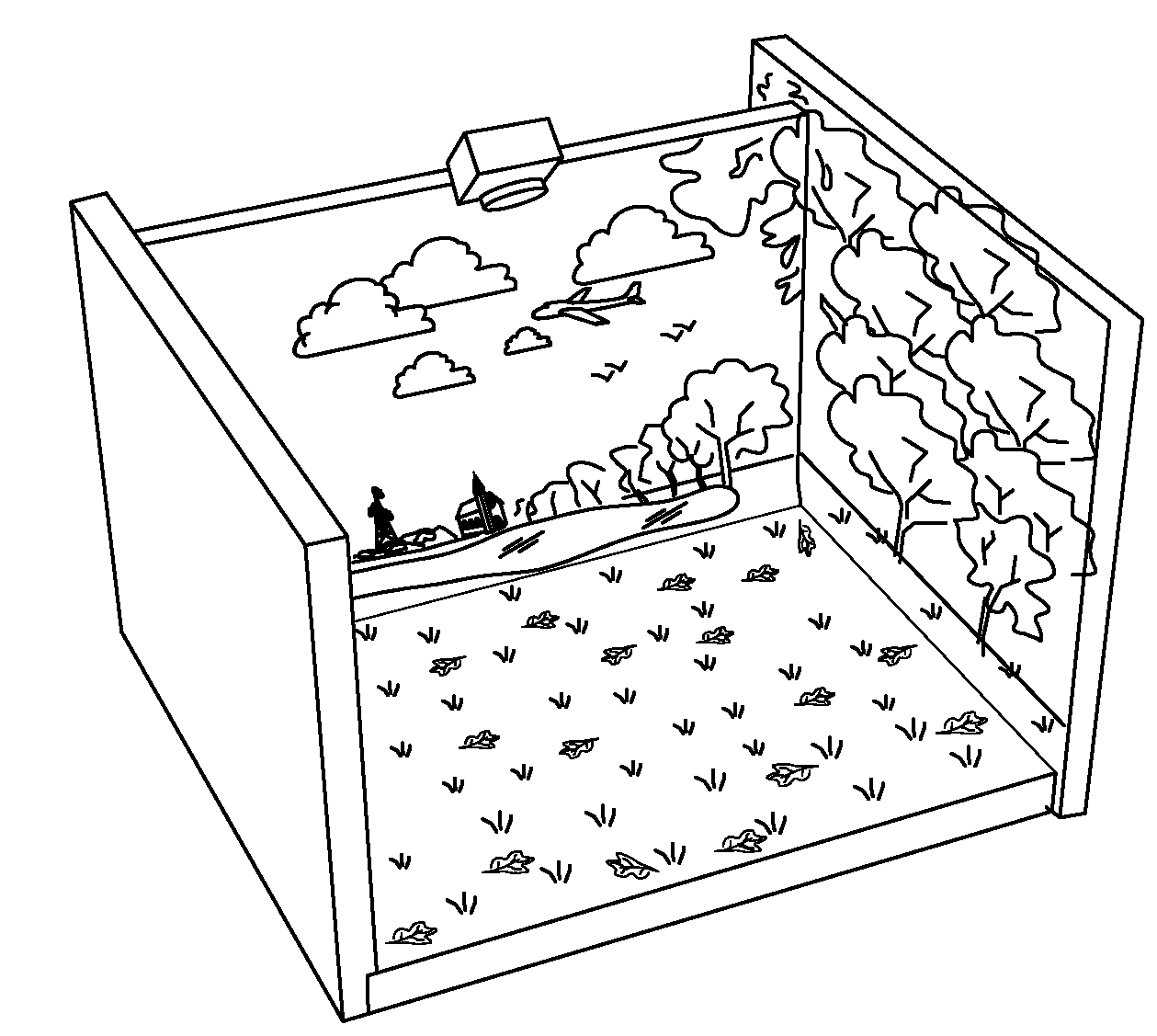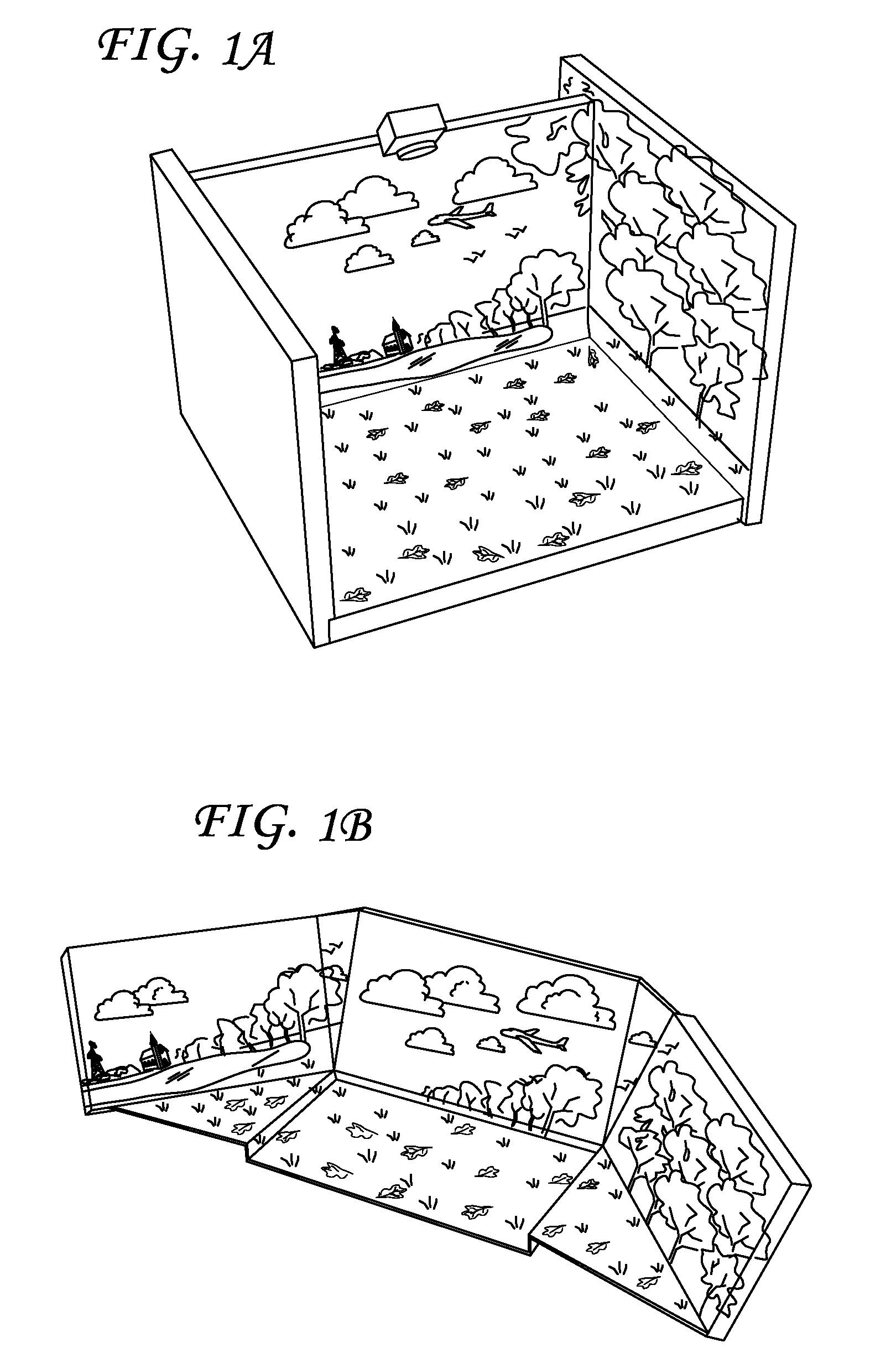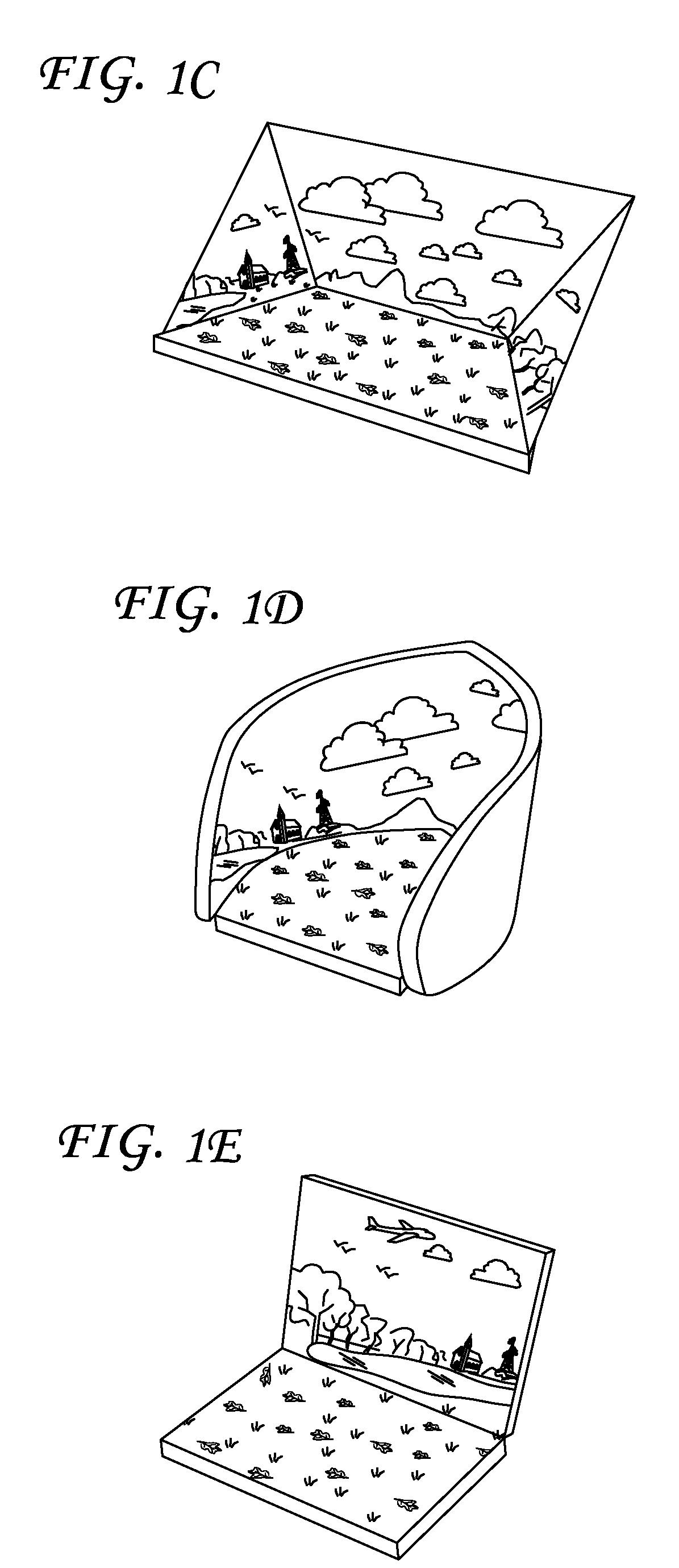Immersive display system for interacting with three-dimensional content
a display system and content technology, applied in the field of systems and user interfaces for interacting with three-dimensional content, can solve the problems of not fully achieving the advantages and experience of dealing with 3-d content on current two-dimensional display systems, and the content display systems (e.g., tvs) are not taking advantage of 3-d content, so as to enhance the user's interaction
- Summary
- Abstract
- Description
- Claims
- Application Information
AI Technical Summary
Benefits of technology
Problems solved by technology
Method used
Image
Examples
Embodiment Construction
[0020]Methods and systems for creating an immersive and natural user experience when viewing and interacting with three-dimensional (3-D) content using an immersive system are described in the figures. Three-dimensional interactive systems described in the various embodiments describe providing an immersive, realistic and encompassing experience when interacting with 3-D content, for example, by having a non-planar display component that provides an extended field-of-view (FOV) which, in one embodiment, is the maximum number of degrees of visual angle that can be seen on a display component. Examples of non-planar displays include curved displays and multiple planar displays configured at various angles, as described below. Other embodiments of the system may include bare-hand manipulation of 3-D objects, making interactions with 3-D content not only more visually realistic to users, but more natural and life-like. In another embodiment, this manipulation of 3-D objects or content m...
PUM
 Login to View More
Login to View More Abstract
Description
Claims
Application Information
 Login to View More
Login to View More - R&D
- Intellectual Property
- Life Sciences
- Materials
- Tech Scout
- Unparalleled Data Quality
- Higher Quality Content
- 60% Fewer Hallucinations
Browse by: Latest US Patents, China's latest patents, Technical Efficacy Thesaurus, Application Domain, Technology Topic, Popular Technical Reports.
© 2025 PatSnap. All rights reserved.Legal|Privacy policy|Modern Slavery Act Transparency Statement|Sitemap|About US| Contact US: help@patsnap.com



